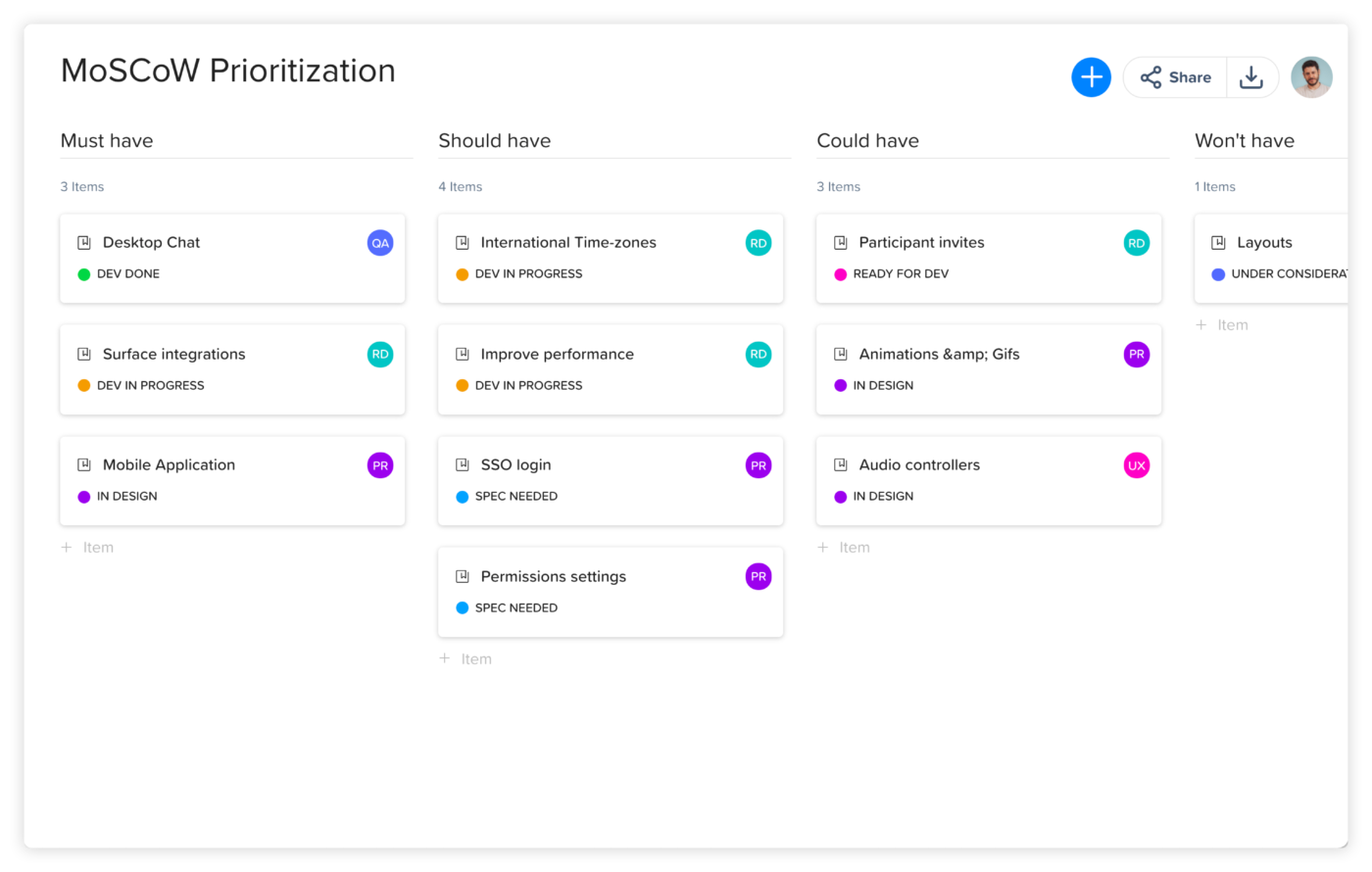The MoSCoW prioritization method is a product prioritization framework that helps teams organize tasks or features based on their importance. By using this simple framework, product teams can focus on delivering the most critical items first while managing resources and expectations more effectively.
How to prioritize effectively with the MoSCoW Method
Sort your items into four categories: must haves, should haves, could haves, and won’t haves for now. Must haves are essential for launching the product, while should haves add significant value but are not critical. Could haves are nice-to-have features with lower impact, and won’t haves for now can be postponed without weakening the product. Start by completing all must haves first, then move to should haves and could haves if resources allow. If time or capacity runs short, focus only on the essentials to ensure a strong release.
How Craft.io makes MoSCoW Prioritization effortless
Craft.io is designed to make prioritization intuitive and collaborative, so your team can focus on building great products, not prioritization tools. Craft.io simplifies the MoSCoW method by making prioritization visual, collaborative, and data-driven. Teams can easily drag and drop items into Must, Should, Could, and Won’t categories, customize workflows to fit their strategy, and connect priorities directly to the product roadmap. Real-time collaboration and built-in analytics ensure every decision is informed, aligned, and focused on delivering real value.












































